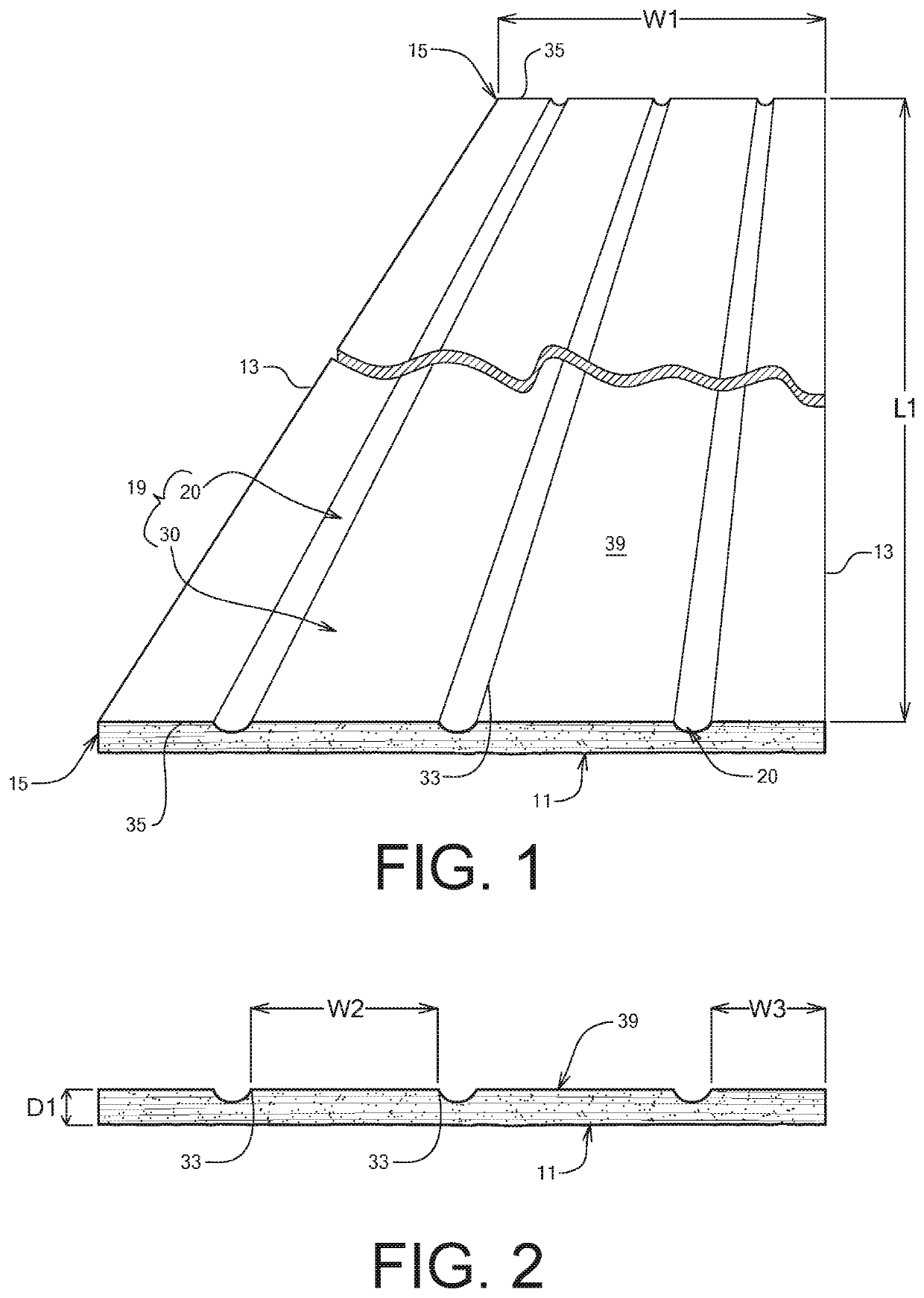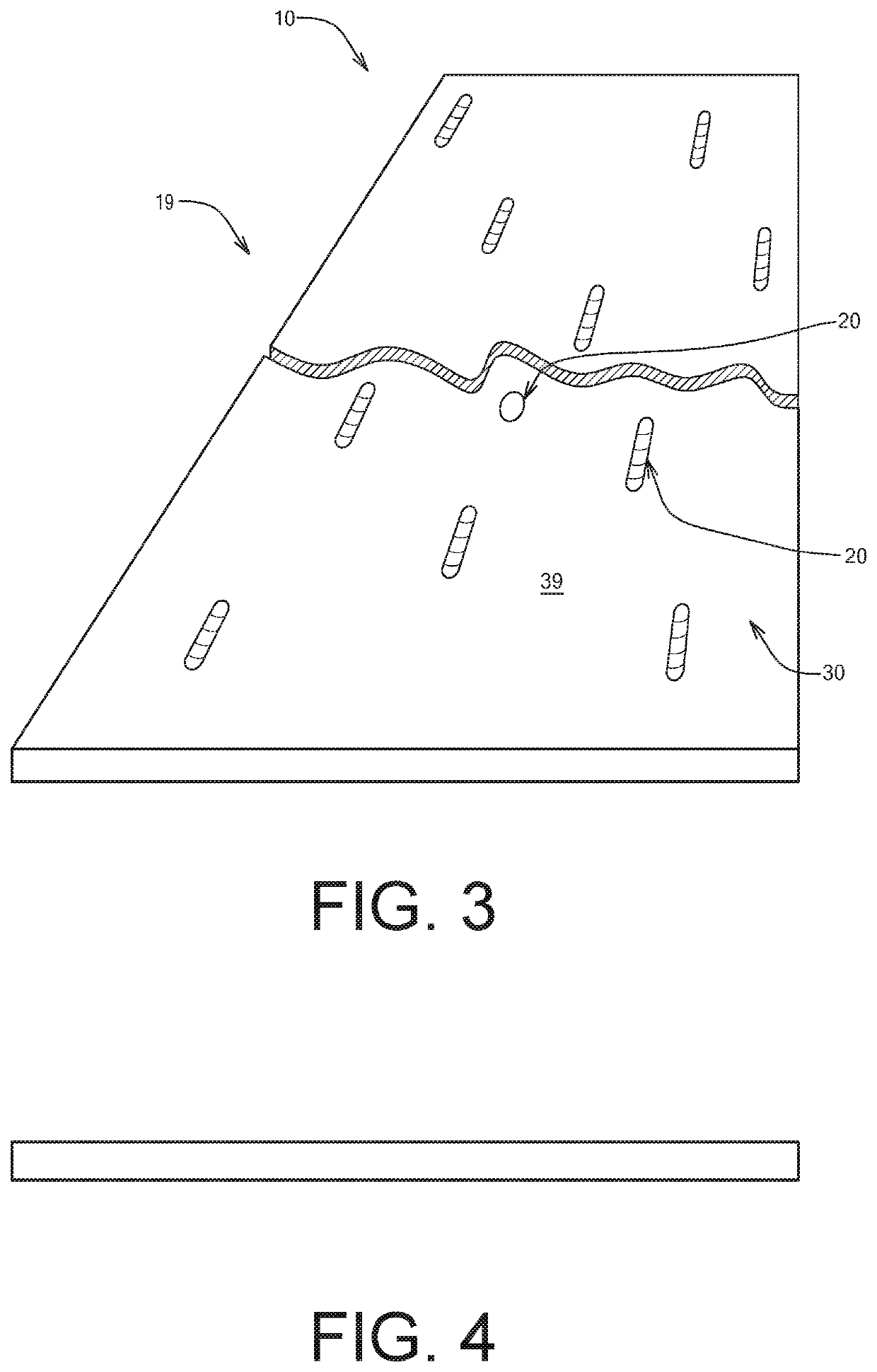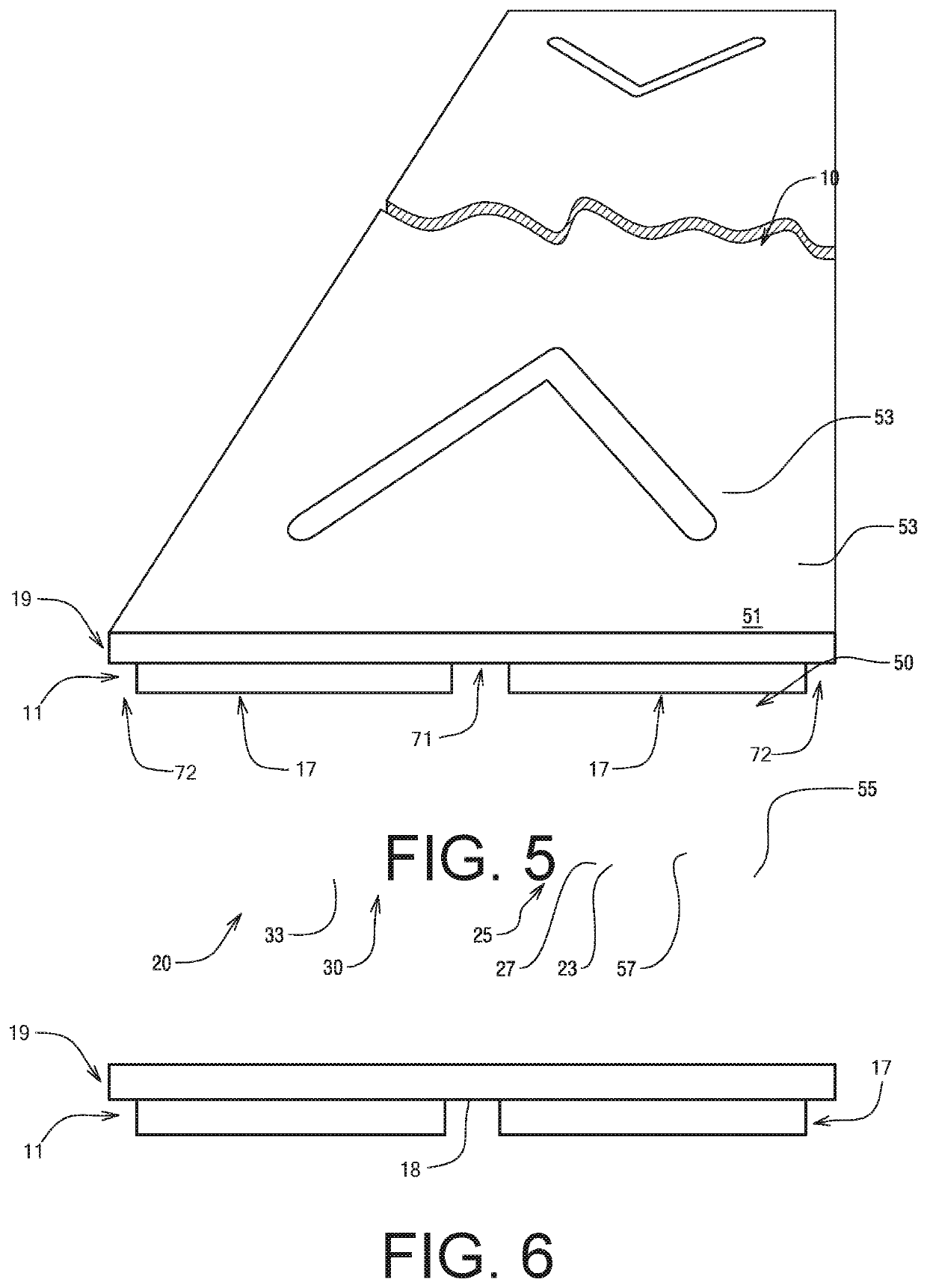Plank for Wall or Surface Covering and Methods Thereof
a technology for wall or surface covering and planks, applied in the field of building materials, can solve the problems of unsatisfactory nailing of planks, difficulty in properly and securely attaching planks to a wall or surface, and end users, and achieve the effect of improving performan
- Summary
- Abstract
- Description
- Claims
- Application Information
AI Technical Summary
Benefits of technology
Problems solved by technology
Method used
Image
Examples
first embodiment
[0075]In FIGS. 1-2, the plank 10 includes three channels 20 disposed between four plateaus 30. The channels 20 are long, narrow U-shaped cuts or indentations in the back member 19 of the plank 10 that extend the length L1 of the plank 10. In this embodiment, each of the channels 20 have the same channel depth D2.
second embodiment
[0076]In FIGS. 3-4, the concave channels 20 do not extend the length of the plank, but instead they are concavities distributed periodically along the back member 19 of the plank 10. FIG. 3 shows that the channel 20 may take the form of a short, slender depression or may be in the shape of an oval trough or a circular concavity. These shaped channel designs are used to limit the amount and identify the location of the adhesive application. For example, in instances when the volume of a full-length channel (as shown in FIG. 1) defines a volume of adhesive that is greater than necessary or desirable, the fabricator of the plank can reduce the volume defined by the channel by using short linear, oval, or circular channels as shown in FIG. 3.
[0077]In the third embodiment of FIGS. 5-6, the concave channels 20 do not extend the length of the plank as in the first embodiment. Instead, the ends of two straight, narrow channels join together to form a V-like trough formation. One V-type chan...
seventh embodiment
[0091]the invention of FIGS. 18-24 discloses an enhanced plank 70, which, as in the earlier embodiments, comprises at least one plateau 30 and multiple channels 20. However, the enhanced plank 70 has a greater length and / or width than the plank 10 of the earlier embodiments. Therefore, a greater square footage of the wall or surface is covered when a single enhanced plank 70 is installed compared to the square footage covered by the smaller plank 10. Due to the larger coverage area, the enhanced plank 70 may provide advantages in speed and efficiency of installation, yet still provides guidance to the user by regulating and standardizing the location of adhesive application and the volume of adhesive that will be applied. Due to the greater length and width, which leads to a heavier piece, the façade 11 and the back member 19 may have a depth that is greater than the depth of the plank 10 of the earlier embodiments. As in the other embodiments, the façade 11 and the back member 19 m...
PUM
 Login to View More
Login to View More Abstract
Description
Claims
Application Information
 Login to View More
Login to View More - R&D
- Intellectual Property
- Life Sciences
- Materials
- Tech Scout
- Unparalleled Data Quality
- Higher Quality Content
- 60% Fewer Hallucinations
Browse by: Latest US Patents, China's latest patents, Technical Efficacy Thesaurus, Application Domain, Technology Topic, Popular Technical Reports.
© 2025 PatSnap. All rights reserved.Legal|Privacy policy|Modern Slavery Act Transparency Statement|Sitemap|About US| Contact US: help@patsnap.com



